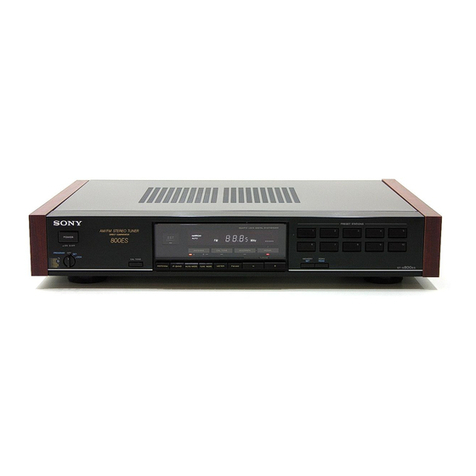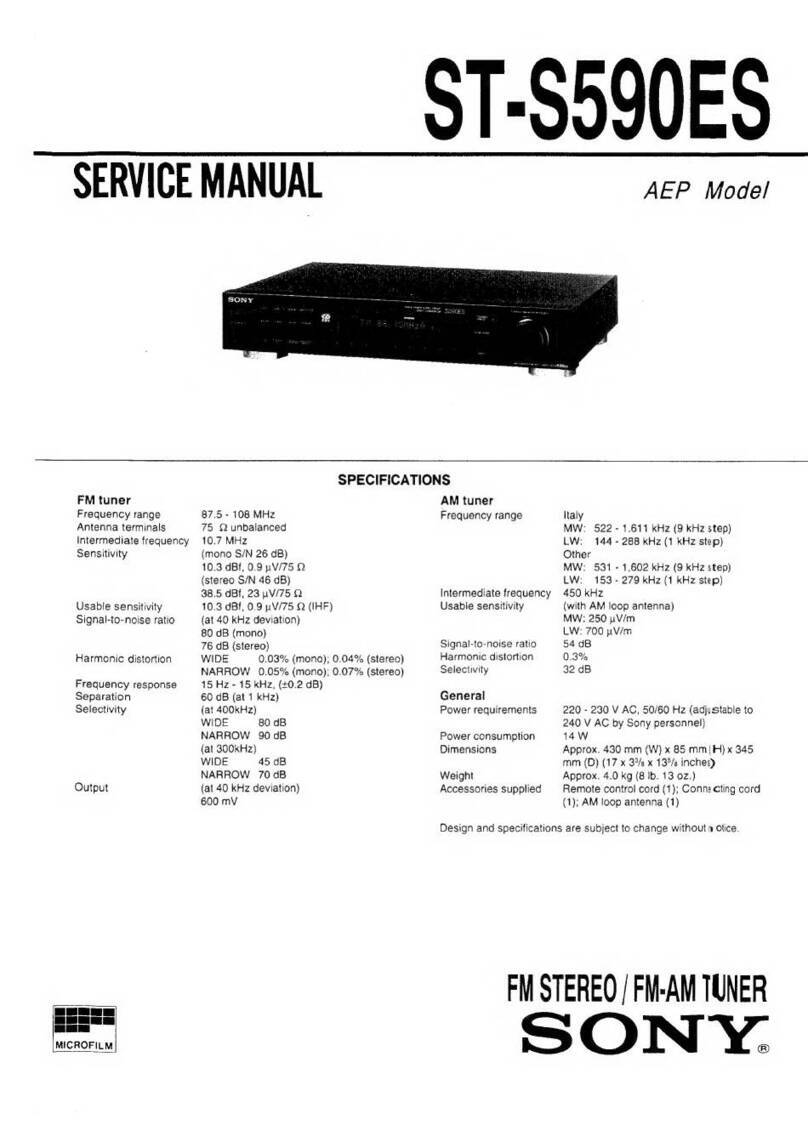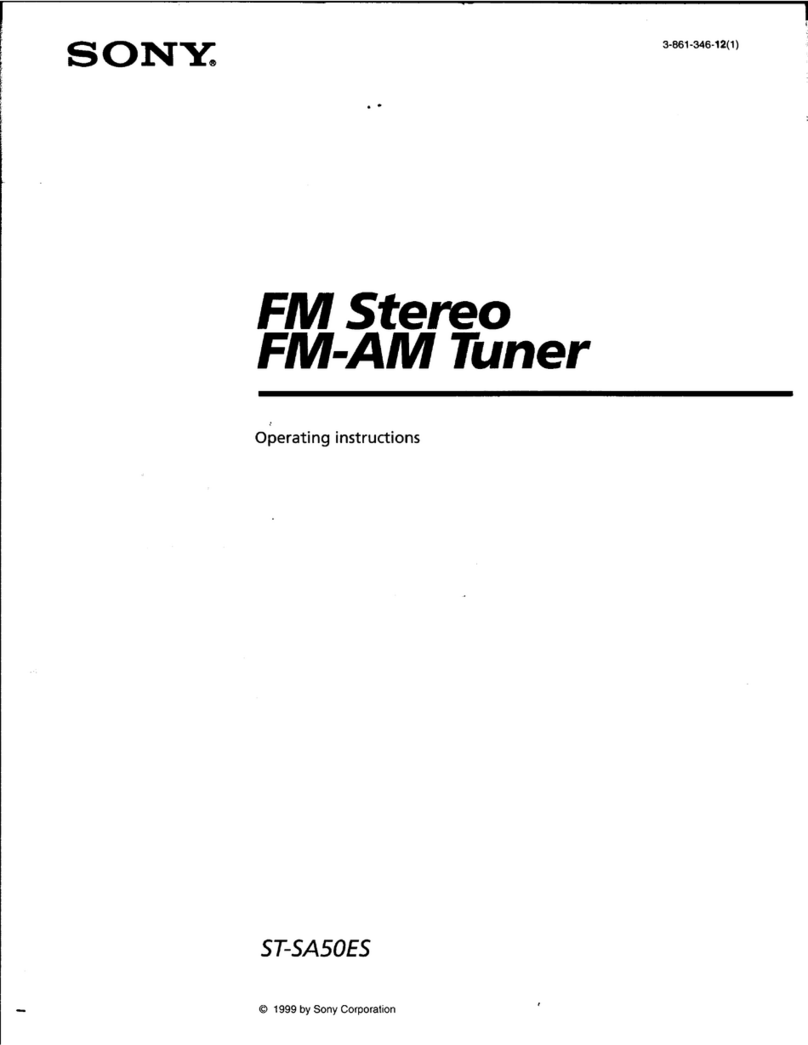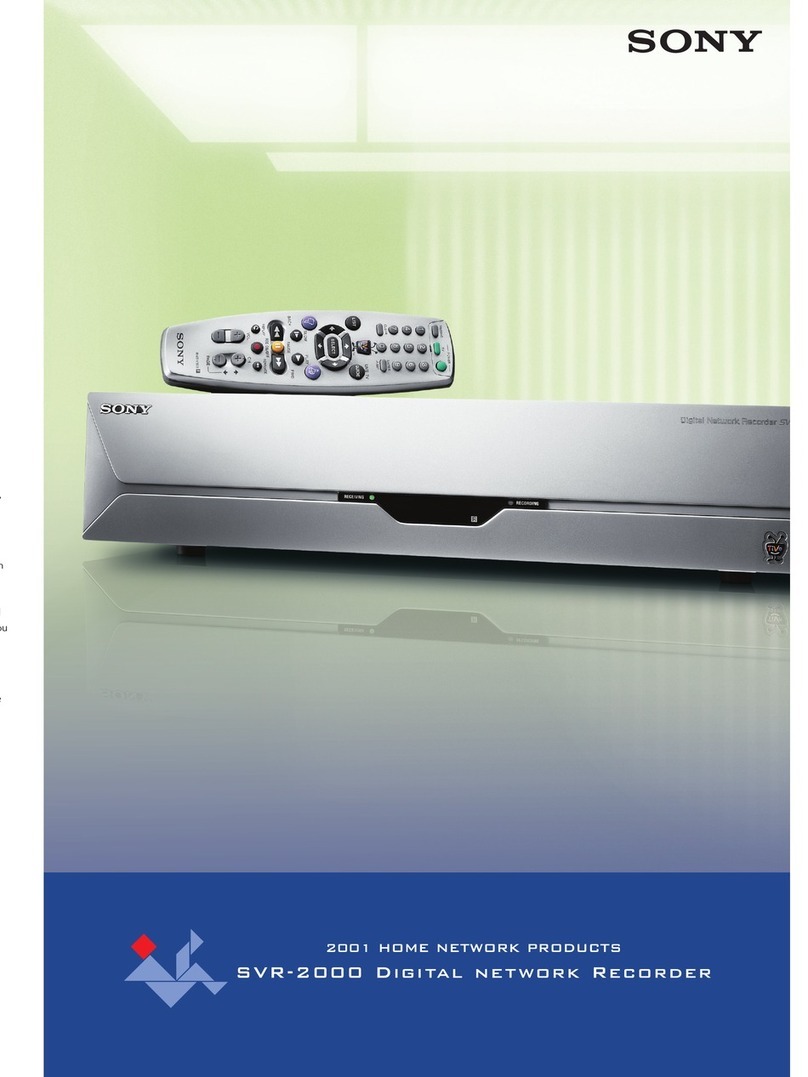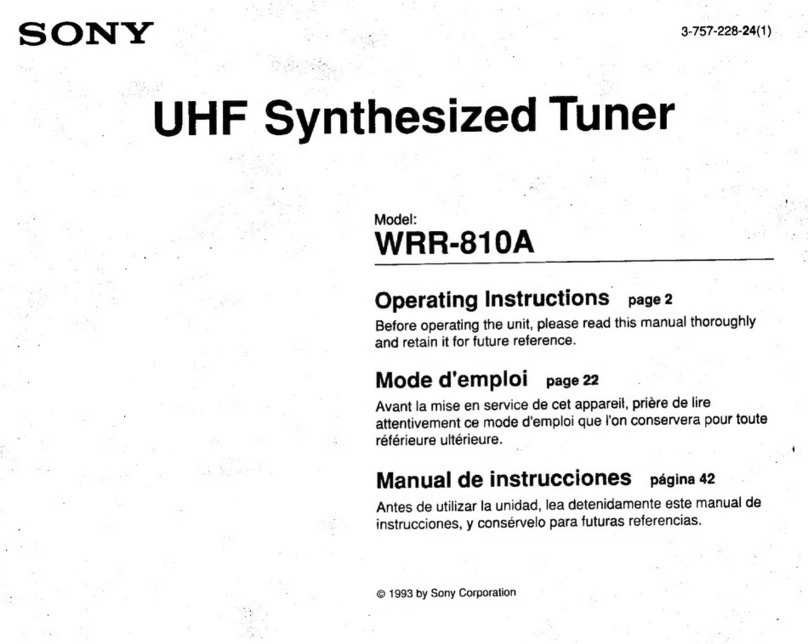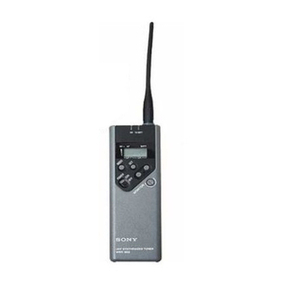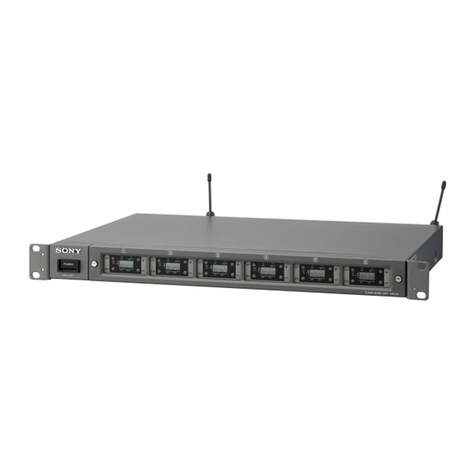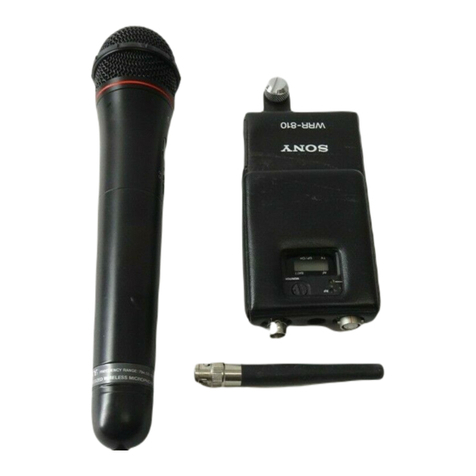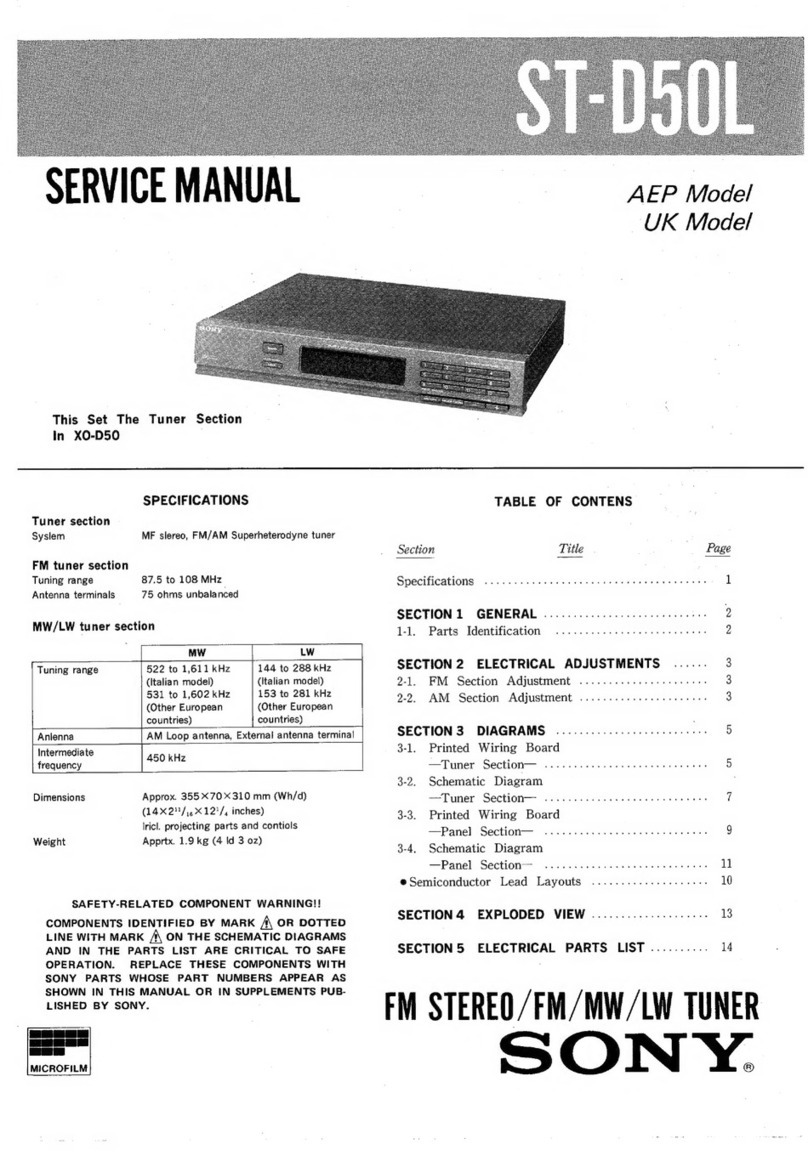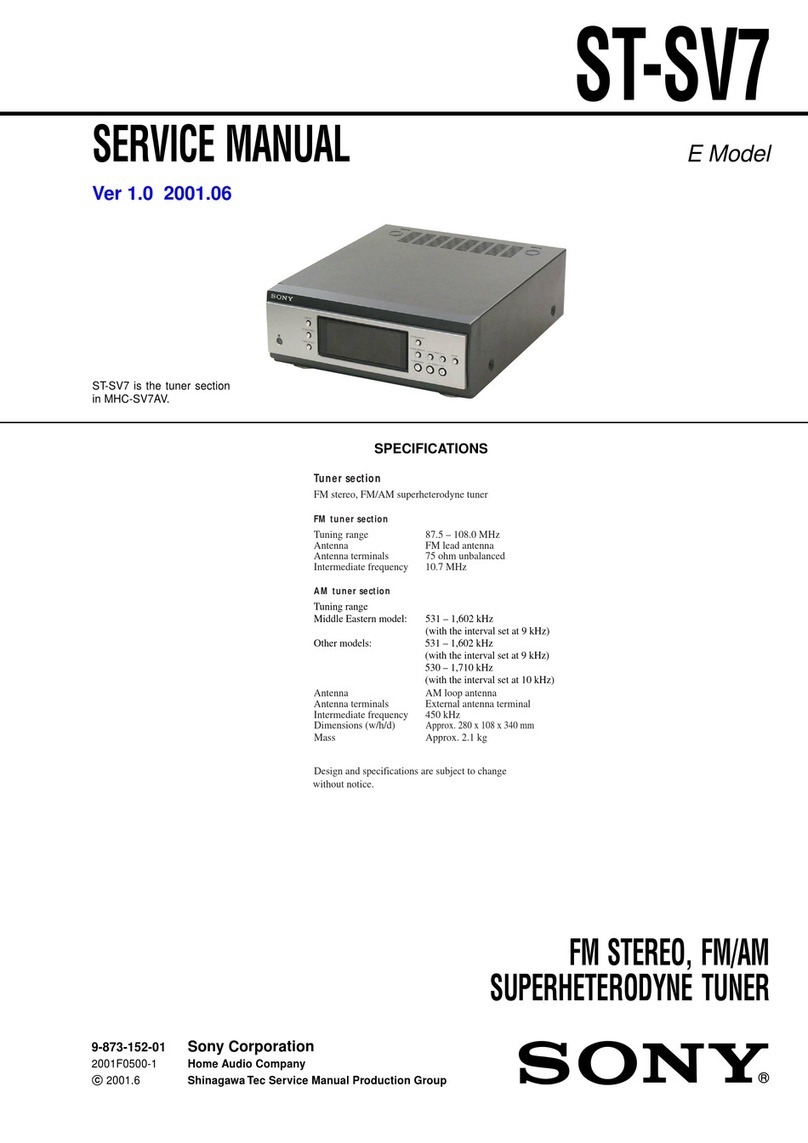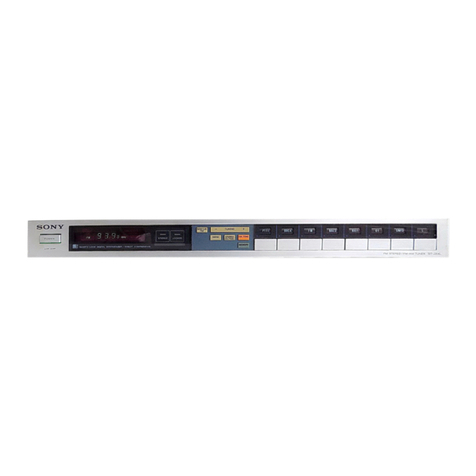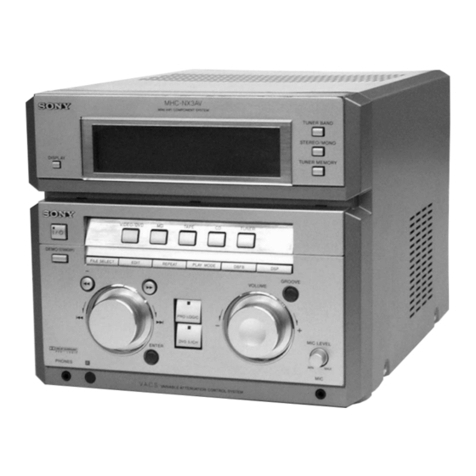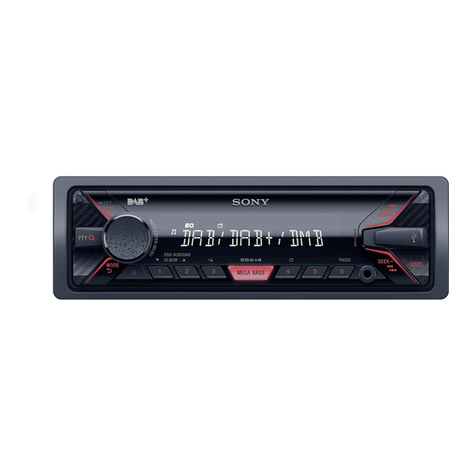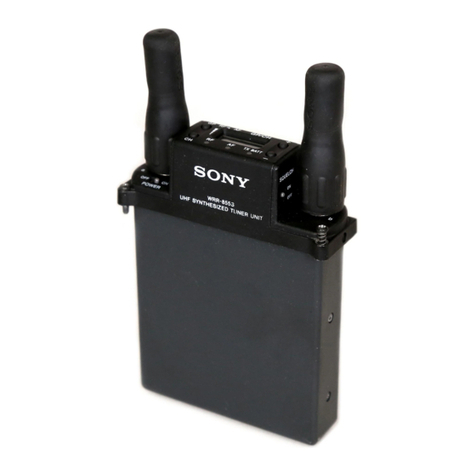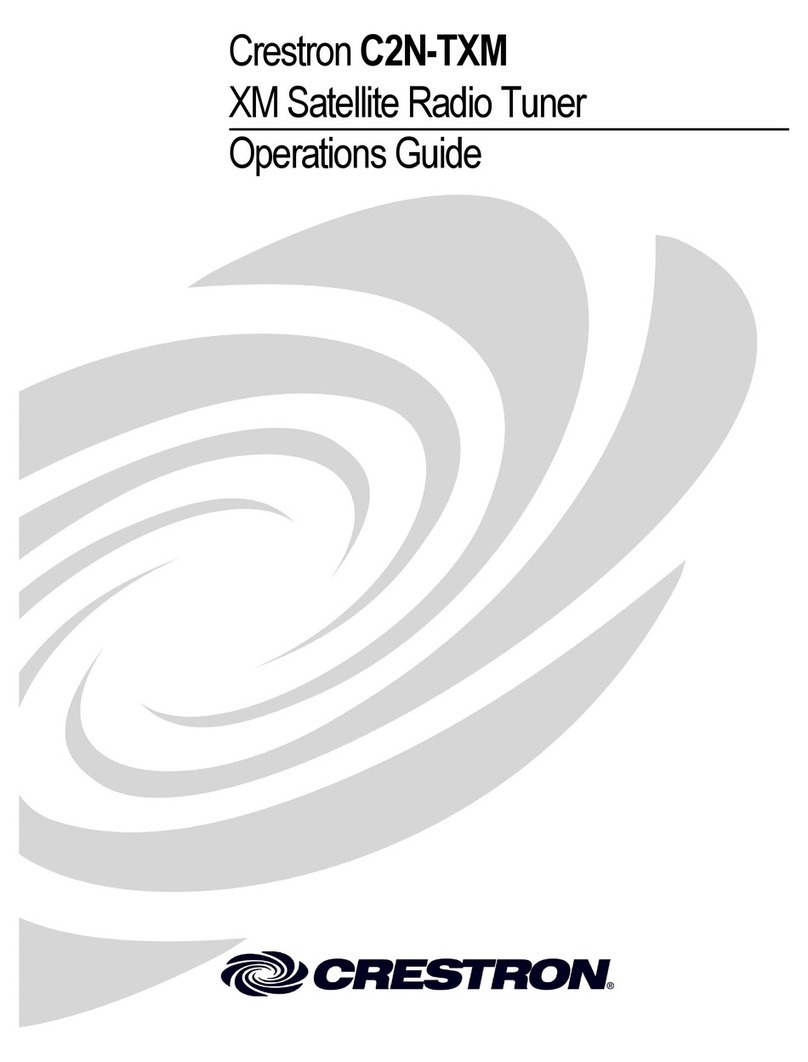Optional Equipment
MB-8N Tuner Base Unit WRU-8N UHF Synthesized Tuner Unit
Receiving channel — 1 channel
Receiving frequencies — 758 MHz to 782 MHz (TV channels 62 to 65) or
782 MHz to 806 MHz (TV channels 66 to 69)
Users may choose from 188 frequencies on each model.
Type of reception — Space diversity
Circuit system — Dual convension superheterodyne
Local oscillators — PLL synthesizer
System dynamic range 116 dB (typical) —
Reference deviation — ±5 kHz deviation at 1 kHz modulation
(Maximum deviation: ±40 kHz at 1 kHz modulation)
Signal-to-noise ratio — 60 dB or more (65 dB typical) at 60 dBµ RF input
at reference deviation, A-weighted
Selectivity — 60 dB or more ±250 kHz
RF squelch level — 10 dBµ, 20 dBµ, 30 dBµ or off
De-emphasis — 50 µs
Frequency response 40 Hz to 20 kHz —
Distortion 1.0 % or less —
Audio output level -20 dBm (LINE)/-58 dBm (MIC) at reference deviation —
Audio output connector XLR-3-32 type (x 4), balanced —
Sub-audio output connector D-sub 15-pin female, unbalanced —
Antenna attenuator level 0 dB, 5 dB, 10 dB or 15 dB —
Antenna connector Inputs: BNC-R type (x 2), 50 Ω(nominal) —
Outputs (for cascade connection): BNC-R type (x 2), 50 Ω(nominal)
Monitor output connector 6.3 mm dia. stereo mini jack (x 1) —
Monitor output level 12 mW —
Network connector RJ-45 (x 1), 10BASE-T —
Power requirements AC 100 to 240 V, 50/60 Hz DC 5 V (supplied from MB-8N)
DC 10 to 24 V
Power available for connected 9 V, max. 100 mA —
AN-820A antennas
Power consumption 50 W when accommodating four WRU-8N tuner units —
Dimensions (W x H x D) 19 x 1 3/4 x 11 7/8 inches (482 x 44 x 300 mm)
2 1/4 x 1 1/4 x 5 7/8 inches (56.0 x 30.7 x 149.0 mm)
Weight 8 lb 6 oz (3.7 kg) 5.8 oz (165 g)
Supplied Accessories AC power code (x 1), —
CD-ROM (contains operation manual and MB-8N Supplied
software) (x 1)
MB-8N Supplied software for computer-based control
System requirements PC: IBM®PC/AT compatible
OS: Windows®98SE/Wi ndows 2000/ Windows Me/Windows NT®4.0
Memory capacity: 128 MB RAM or more
CPU: Intel Pentium®400 MHz or faster
Display: 1024 x 768 screen resolution or higher, 256 color display or higher
Network interface: 10/100 BASE-T Network interface card
Hard disk drive:
200 MB or more remaining, after MB-8N supplied software and
other applications are installed.
Use of Sony wireless devices in the United States of America is regulated by the Federal
Communications Commission as described in Parts 15 and 74 of the FCC regulations.
Users authorized thereby are required to obtain an appropriate license.
©2002 Sony Electronics Inc. All rights reserved.
Reproduction in whole or in part without written permission is prohibited.
Features, design and specifications are subject to change without notice.
All non-metric weights and measures are approximate.
Sony is a registered trademark of Sony Corporation.
IBM is a registered trademark of International Business Machines Corporation.
Pentium is a registered trademark of Intel Corporation.
Windows, Windows NT are registered trademarks of Microsoft Corporation.
All other trademarks are the property of their respective owners.
A-1095
MK7781V1TC02MAR
SpecificationsSpecifications
WRT-822A/822B
UHF Synthesized
Transmitter
WRT-8B
UHF Synthesized
Transmitter
ECM-77BC
Lavalier Microphone ECM-350BC
Headset Microphone WD-880A
UHF Antenna Divider AN-820A
UHF Antenna
Printed in USA
Sony Electronics Inc.
One Sony Drive
Park Ridge, NJ 07656
www.sony.com/proaudio

